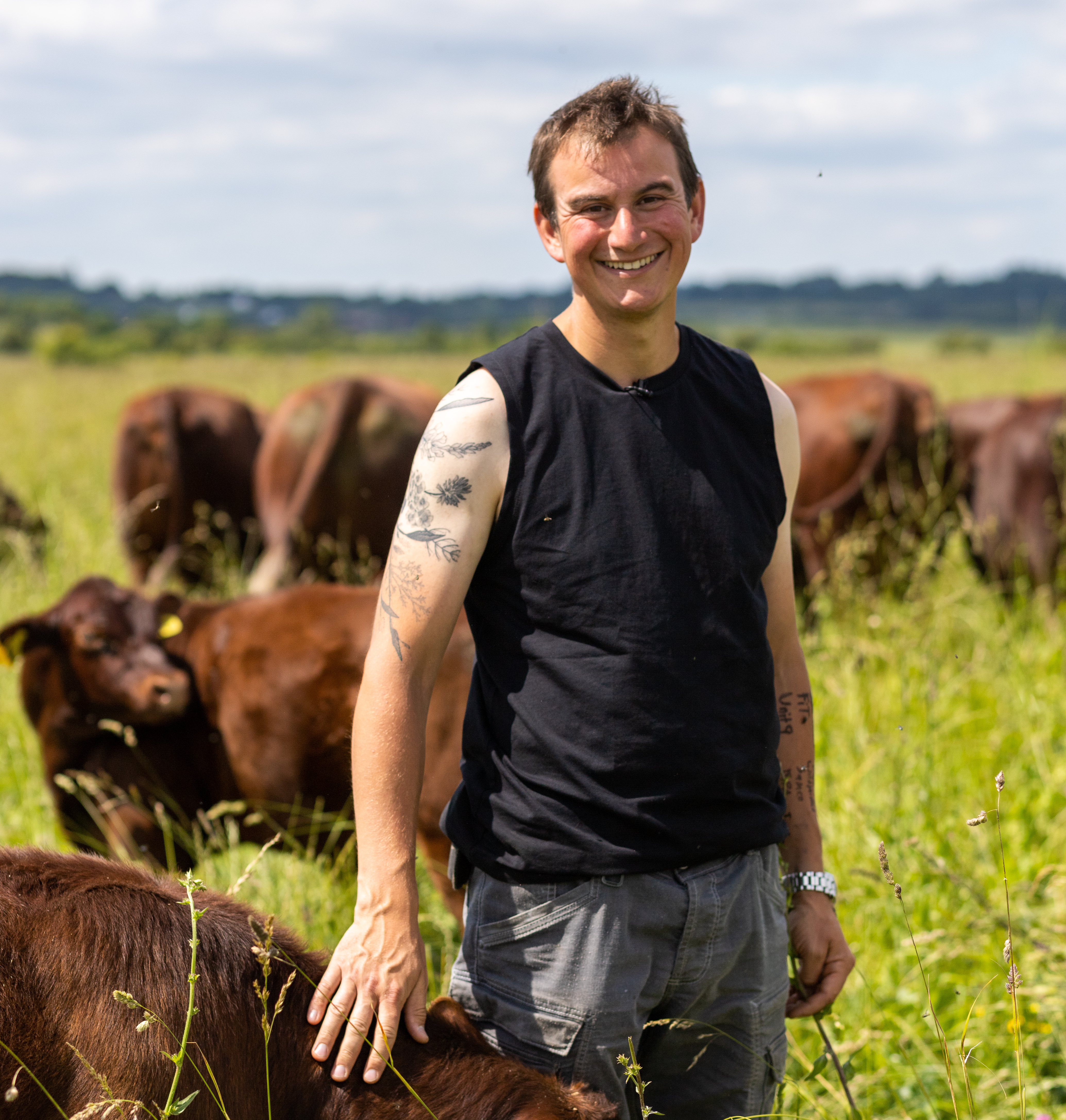

‘I describe myself as an agroecological mixed farmer,’ says George Young. ‘Farming with nature is one of the key things I want to do here on the farm, utilising nature’s toolkit rather than machines and chemicals.’
Nine years ago, Fobbing Farm was growing wheat, OSR and peas in a standard six course rotation but George wanted to change the cropping system,revitalise the soil, build resilience, improve the ecology to encourage began introducing large scale herbal leys into his arable rotation.
George has sown 250 acres of herbal leys over the past 4 y ears and felt it was important to incorporate ruminant livestock. He chose cows and now values them immensely. ‘We’ve had to get the infrastructure right but we’ve worked hard with semi-permanent fencing and I feel of the farm. After four years of a diverse mix of herbs, legumes and grasses grazed by the cows I can mine the nutrition in the soil for three years. The leys really are the base for me being able to farm in a sustainable and regenerative way and they look and smell stunning too.’
They are established with a direct drill - a New Zealand styel cross slot. ‘We don’t sow deep and we roll twice for maximum seed to soil contact. We’ve had great success even with hit and miss rainfall.’ The combination of leys and livestock enables different types of farming with different income streams, explains George. ‘I can produce meat, grow fruit and nuts, or heritage grains, even high value market garden vegetables!’. The eleven varieties of ancient grains have deep roots to tap into the rich nutrition of the soil. Fobbing Farm now has a mill room, featuring Vermont granite and sells direct to bakers.
George has also introduced agroforestry, planting a plethora of tree species - quince, plums, cherries, pears, walnuts and cobnuts. He’s trialling apricots, nectarines the middle of the farm, with birch on the outside. Willow is great medicinally for livestock and can be coppiced for wood chip and compost. Belts of trees reduce erosion during the early stages of any arable crops.
‘From a livestock management perspective it’s exciting. I wanted to make sure my livestock can graze on all the interesting parts of the farm. Trees provided them with shade and protection from rain.’
So what next? The farm is currently in organic conversion and George says he has ‘fallen in love with ecology.’
Ecologically it's tremedous. I saw my first dung beeetle on the farm 18 months ago and now there are at least 10 species. They are key ecological builders, eating slugs eggs, feeding birds and mammals. You simply don’t get them without a diverse ley because you’d be using synthetic wormers which kill dung beetles. The herbal leys are doing a vital jog for pillinators too. They contain around 10 flowering plants, are building life into teh soil, encouraging small mammals, larger mammals and birds of prey to live on the farm.'
Date Posted: 11th December 2023



